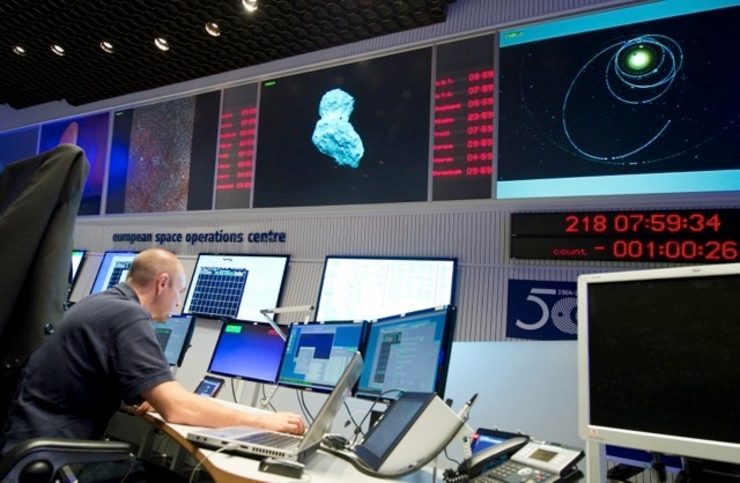SUMMARY
This is AI generated summarization, which may have errors. For context, always refer to the full article.

PARIS, France – Europe’s Rosetta spacecraft will attempt on November 12 to land a robot lab on a comet hurtling through deep space in a first for humankind, a statement said Friday, September 26.
Ten days after unveiling the preferred landing spot on Comet 67P/Churyumov-Gerasimenko, the European Space Agency (ESA) has now set a firm date for the high-stakes operation more than 450 million kilometers (280 miles) from Earth.
Rosetta will attempt to set down its lander, dubbed Philae, while orbiting the weirdly-shaped comet flying towards the Sun at about 16.79 kilometers per second (10.4 miles per second).
Comet “67P” is made of two lobes joined by a narrow neck – its silhouette resembling that of a rubber duck.
The ESA has identified “Site J” on the smaller lobe or “head”, roughly where the duck’s forehead would be, as the preferred landing site. A backup “Site C” is located on the larger lobe.
If all goes according to plan, Rosetta will release Philae at 0835 GMT on November 12 at a distance of 22.5 km from the comet’s center, to land 7 hours later.
A delay of 28 minutes and 20 seconds in the one-way signal from Rosetta means that confirmation of landing will arrive on Earth at about 1600 GMT.
If the backup site is used, separation will happen at 1304 GMT, at a distance of about 12.5 km, to land 4 hours later, said an ESA press statement. In this scenario, confirmation will arrive at about 1730 GMT.
Rosetta is equipped with 11 cameras and sensors that have already yielded astonishing images of the comet.
But experts are hoping for even bigger discoveries from the 10 instruments aboard Philae.
They would like to learn more about comets – icy bodies that were born along with the Solar System some 4.6 billion years ago, and are credited by at least one theory of bringing life to Earth.
Comet 67P is on a 6.5-year Sun orbit.
Rosetta caught up with it after a 6-billion-km trek that required four flybys of Earth and Mars, using the planets’ gravity as a slingshot to build up speed.
At their closest approach on August 13, 2015, the comet and Rosetta will be 185 million km from the Sun.
Weighing in at about 100 kg, Philae would use harpoons to anchor itself to the comet before driving screws into the surface for better grip.
Its experiments would include drilling up to 30 centimeters (18 inches) into the comet to extract material for onboard chemical analysis. – Rappler.com
Add a comment
How does this make you feel?
There are no comments yet. Add your comment to start the conversation.